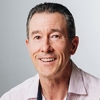
Newsflow has been light but there has been some follow through of the price action seen on Friday night, following the softer than expected US payrolls report that supported the market’s view of the Fed restarting the easing cycle as soon as next week.
US Treasury yields are down 1-3bps out to 10-year maturities, while the 30-year rate is down 7bps. The 10-year rate has traded down to a fresh five-month low of 4.04%. The market is pricing a Fed rate cut next week as a sure thing, with a 15% chance of a jumbo 50bps cut. Almost three full rate cuts are now priced for the three meetings left of 2025, with 72bps priced in aggregate. Another three full rate cuts are priced for next year. European 10-year rates closed down 2-4bps.
US equities show modest gains, close to record high levels, with the market seeing Fed rate cuts as supporting the earnings outlook. US equities only fall during rate cutting cycles when there is fear of imminent recession, but that is not the case this cycle. The Euro Stoxx 600 index closed up 0.5%.
Gold prices continue their hot run, and the spot price reached a fresh record high of USD3646 per troy ounce. In addition to the rising prospect of Fed rate cuts and lingering concerns around the fate of the Fed’s independence, data released over the weekend showed the PBoC increased its gold holdings for a 10th month in August, as it diversifies its reserves away from USDs.
In currency markets, the USD is broadly weaker, albeit dollar indices only show a fall of 0.2%-0.3% – CAD is also weak in the aftermath of a poor Canadian employment report Friday night, while the yen is even weaker after the market digested the weekend decision of Japanese PM Ishiba to step down in the face of mounting pressure after the LDP party lost its majority at the July Upper House elections.
Political uncertainty will overhang Japan until a new LDP leadership vote takes place, which adds to the period that the BoJ will remain on the sidelines, unresponsive to the higher inflation backdrop. The market would be concerned if one of the leading candidates, Takaichi gets the nod, as she favours more stimulatory policy settings, meaning higher long-term rates and a weaker yen. Going against the global grain, Japan’s 30-year bond yield rose 3bps to 3.27% yesterday.
The NZD has outperformed, up 0.8% from last week’s close to 0.5940. As we noted in our weekly NZD report yesterday, the NZD has been out of favour recently despite a backdrop of NZ’s goods terms of trade rising to a record high and a massive fall in the trade deficit over the past couple of years. And while the economy hit a pothole in Q2, growth momentum has turned positive in Q3.
While the AUD is stronger, up 0.5% from last week’s close, NZD/AUD is trading back over the 0.90 mark. Forays below the figure have proven to be short-lived over the past year and a bit. NZD/JPY is up 0.9% to 87.6 while gains against EUR and GBP have been close to 0.5%.
The key takeout from China trade data yesterday, was that China’s trade surplus remains very high and on track to end the year at a record high above USD1 trillion. A plunge in exports to the US has been offset by a rise in exports elsewhere, while import growth remains sluggish on the back of a soft domestic economic backdrop.
As widely expected, French Prime Minister Bayou lost a confidence motion in Parliament. He was unpopular as he proposed policies to bring the budget deficit under control, but there is no appetite for that in France. The next move is likely to be President Macron naming a new premier, making it four new governments within a year or so. While the vote came after the French bond and equity markets had closed, there was little reaction to EUR. French-German bond spreads already trade at elevated levels, reflecting a higher risk premium for France.
Yesterday, NZDM launched the syndication of a new 2050 inflation-indexed bond, looking to issue at least $1b and the transaction capped at $2b, with initial price guidance of 28 to 36bps over the 2040 inflation-indexed bond. An update on the deal last night showed a firm orderbook of over $3.6b and price guidance was revised to a 28-29bps spread. Largely reflecting global forces, NZGB yields were down 2-5bps across the curve yesterday, with a flattening bias, while swap rates were down 3-4bps.
In the day ahead, NZ Q2 business data will allow us to firm up our estimate of GDP for the quarter, which currently sits at minus 0.2% q/q. Elsewhere, only second-tier data are released, with some interest in the extent of the downward revisions to US non-farm payrolls for the year to March 2025. The estimates we’ve seen range from 475,000 to 950,000.

We welcome your comments below. If you are not already registered, please register to comment.
Remember we welcome robust, respectful and insightful debate. We don't welcome abusive or defamatory comments and will de-register those repeatedly making such comments. Our current comment policy is here.